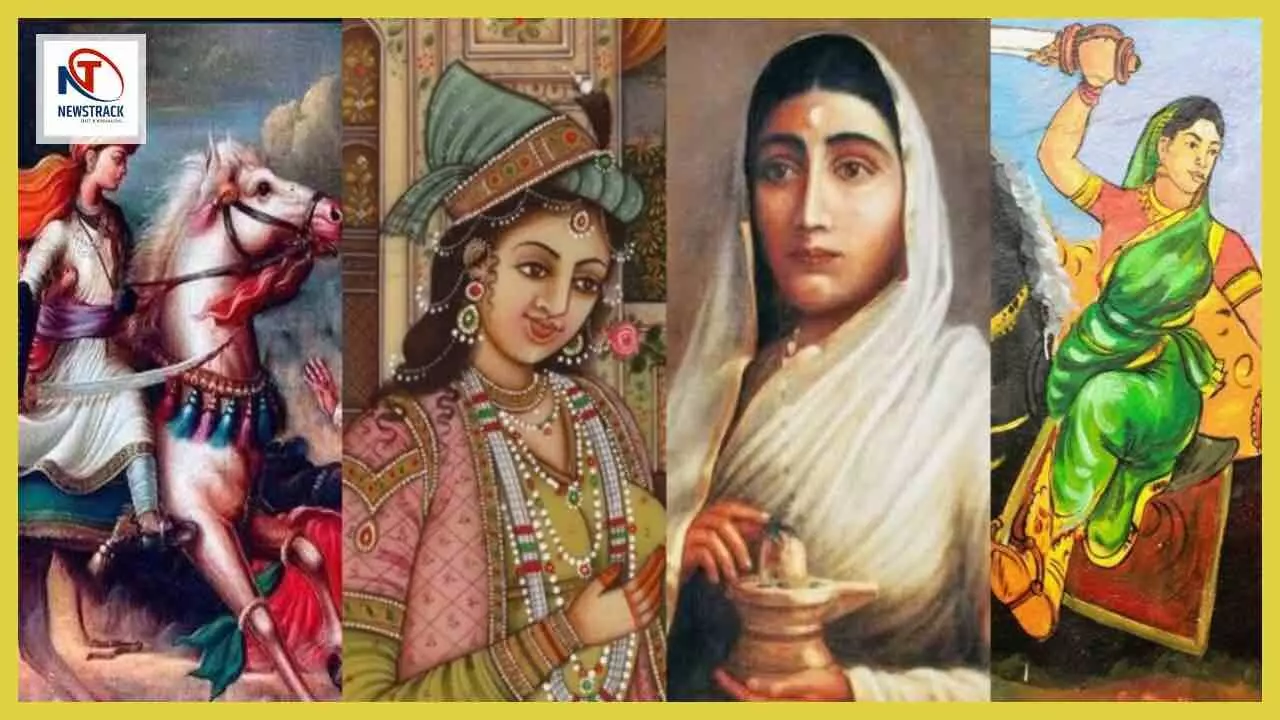TRENDING TAGS :
Hindu Queens of the Mughal Empire: The Untold Tale of Beauty, Power, and History
Hindu Queens of the Mughal Empire: Explore the forgotten stories of Hindu queens of the Mughal Empire who shaped politics, art, and religious harmony across dynasties.
Hindu Queens of the Mughal Empire
Hindu Queens of the Mughal Empire: Whenever we talk about the Mughal Empire, grand images of royal courts, magnificent forts, precious jewelry, and boundless wealth come to mind. However, hidden within the golden pages of this history are stories of relationships that transcended cultural and religious boundaries. The Hindu queens of the Mughal emperors were not only symbols of exceptional beauty but also exemplified politics, diplomacy, and social harmony. Their lives were not confined to palaces; they actively participated in royal decisions, religious tolerance, and court strategies. Let us explore the fascinating and historical accounts of the Hindu wives of the Mughal emperors.
Harka Bai (Jodha Bai)
Hindu Rajput Empress of Akbar
Harka Bai, popularly known as Jodha Bai, was the daughter of Raja Bharmal of Amer. Her marriage to Emperor Akbar in 1562 marked a historical turning point, establishing new ties between the Mughals and Rajputs.
This alliance garnered the support of Rajputs, and many were appointed to high military and administrative positions in Akbar’s empire.
Akbar allowed Harka Bai to practice her religion freely and even built a private temple for her. This act became a symbol of Akbar’s policy of Sulh-e-Kul (universal tolerance). From this union was born Jahangir (Salim), who later ascended the Mughal throne.
Manavati Bai
Sister of Man Singh and Principal Wife of Jahangir
Manavati Bai, sister of the famed Rajput king Man Singh, was married to Jahangir. She was known for her beauty and education and held great respect in the court.
Her marriage further deepened Mughal-Rajput relations. Jahangir himself mentions her in his autobiography, Tuzuk-e-Jahangiri, indicating the closeness they shared.
Taj Bibi Bilqis Makani (Jagat Gosain)
Hindu Mother of Shah Jahan
Jagat Gosain was born into the royal Rathore family of Marwar (Jodhpur), daughter of Raja Uday Singh. Her marriage to Prince Salim (later Jahangir) was a political alliance crafted under Akbar’s Mughal-Rajput policy.
Islamic Title
After her marriage, she was converted to Islam and named “Taj Bibi Bilqis Makani,” the official title used in the royal harem.
Birth of Shah Jahan and Maternal Influence
She gave birth to Prince Khurram (later Shah Jahan) on 5 January 1592. Shah Jahan was greatly influenced by her religious tolerance, Hindu values, and upbringing.
A Symbol of Cultural Harmony
Jagat Gosain represented an era of religious harmony, marital diplomacy, and cultural unity. She was not just a queen of alliance but a Hindu mother who shaped the values of one of the greatest Mughal emperors.
Promoter of Arts and Culture
She supported Hindu art and music in the court. Her influence kindled Shah Jahan’s passion for architecture and aesthetics, seen in iconic monuments like the Taj Mahal.
Malika-e-Hind (Lalbai)
Hindu Queen of Bahadur Shah Zafar
Lalbai was one of the Hindu queens of the last Mughal Emperor, Bahadur Shah Zafar. She was considered an influential personality in the court. Although historical records about her are limited, she finds mention in folklore, Urdu-Persian literature, and Delhi’s historical chronicles.
Lalbai – Intellectual and Cultural Power
It is believed that she belonged to a Hindu royal or Brahmin family. Whether their marriage was a political alliance or born of love remains uncertain, but Lalbai held a special place in the royal harem and court.
Courtly Influence
Lalbai was counted among the emperor’s favorite queens. She was well-versed in scriptures and music and played a prominent role in cultural events. Some accounts mention a rivalry with another queen, Zeenat Mahal.
Role in the 1857 Revolt
During the First War of Independence in 1857, when Zafar surrendered to the British, folklore suggests that Lalbai advised him against surrender.
Symbol of Religious Tolerance
Lalbai stood out as a rare woman who represented religious diversity and harmony. Her presence reflected the cultural and political voice of Hindu women in the Mughal court.
Other Prominent Hindu Queens and Their Fascinating Tales
Other Rajput Queens of Akbar
Apart from Jodha Bai, Akbar married several other Rajput princesses from Bundi, Jaisalmer, and Bikaner. These marriages were part of peace and alliance strategies rather than outcomes of war.
Influence on Royal Cuisine
The culinary preferences and traditions of Hindu queens introduced new dishes to the Mughal kitchens—such as dal-baati, ghee-based desserts, and various Rajasthani vegetables.
Participation in Religious Festivals
The Hindu wives of Akbar, Jahangir, and Shah Jahan were allowed to celebrate Holi, Diwali, and Raksha Bandhan. Akbar even decreed that soldiers would have rakhi tied by their sisters as a pledge of protection.
Education and Artistic Interests
These queens were not just beautiful—they were educated and artistically inclined. They had deep interests in music, dance, literature, and painting. Jodha Bai translated Sanskrit texts into Persian. Under Akbar’s direction, several Hindu scriptures were translated into Persian. Queens like Manavati Bai supported musicians and hosted cultural soirées.
Influence on Mughal Governance
The Hindu queens indirectly influenced Mughal politics and administration. Akbar’s formulation of Din-i-Ilahi is believed to have been inspired by the religious and intellectual diversity in his court, particularly his wives. Due to their presence, Hindu military officials and priests were often given positions in court.
Final Years and Legacy
These Hindu queens enriched Mughal history and laid the foundation of an era that embraced cultural diversity. Palaces and structures built in their honor in Agra, Fatehpur Sikri, and Lahore still stand as witnesses to their legacy.
In Folklore and Literature
Stories of queens like Jodha Bai and Manavati Bai continue to thrive in folk songs, television series, and novels. These Hindu queens were not merely strategic additions to the royal court—they were embodiments of cultural, social, and religious pluralism. The grace, wisdom, and dignity with which they embraced royal life continue to inspire. Their stories remind us that true love and mutual respect know no religious boundaries.


